Introduction
Varanasi, also called Banaras or Kashi, is often described as the oldest continuously inhabited city in the world. Resting peacefully on the banks of the River Ganga, this mystical city has fascinated travelers, saints, poets, and seekers for centuries. A journey to Varanasi India travel is not only about visiting a destination—it is about stepping into a living spiritual epic where faith, tradition, and culture flow together.
From the grandeur of the evening Ganga Aarti to the vibrant chaos of its narrow lanes, Varanasi overwhelms the senses. Here, life and death coexist on the same riverbank, and the rhythm of daily rituals has remained unchanged for thousands of years. Whether you come for spiritual awakening, cultural exploration, or simple curiosity, Varanasi touches every visitor in ways that words can hardly capture.
This guide takes you through everything you need to know for your trip: the city’s history and significance, the best time to visit, and an array of unforgettable things to do in Varanasi.
History and Significance of Varanasi
To appreciate Varanasi, India travel, one must first understand its unique place in history. Archaeological and literary evidence suggest that Varanasi has been a center of life, faith, and trade for over three millennia. In Hindu scriptures, the city is referred to as Kashi, meaning “the city of light.”
Religious Importance
-
Hinduism:
-
Devotees believe that bathing in the Ganga at Varanasi purifies the soul and that dying here leads to liberation from the endless cycle of rebirth. The Kashi Vishwanath Temple, one of the twelve Jyotirlingas, stands as the holiest site dedicated to Lord Shiva.
-
Buddhism:
-
Just outside Varanasi lies Sarnath, where Lord Buddha shared his first teachings after enlightenment, making the region sacred to Buddhists worldwide.
-
Jainism:
-
The city also holds significance for Jains, as it is the birthplace of Parshvanatha, the 23rd Tirthankara.
Cultural Importance
Beyond religion, Varanasi has always been a cultural melting pot.
-
The world-renowned Banarasi silk sarees are woven here and are coveted by brides and collectors alike.
-
The city has nurtured legendary artists such as sitar maestro Ravi Shankar and shehnai genius Bismillah Khan.
-
It is also a hub for Ayurveda, Sanskrit studies, and higher learning, with institutions like Banaras Hindu University (BHU) carrying forward its intellectual legacy.
Walking through Varanasi feels like traveling through centuries of history that remain alive in the present.
Best Time to Visit Varanasi
The city’s spiritual and cultural experiences can be deeply influenced by the season you choose to visit.
Winter (October to March) – Ideal for Travelers
-
Pleasant weather makes sightseeing comfortable.
-
Perfect for sunrise boat rides on the Ganga and evening walks along the ghats.
-
Festivals like Diwali, Dev Deepawali, and Maha Shivaratri add magical charm.
Summer (April to June) – Quiet but Intense
-
The heat is harsh, often crossing 40°C.
-
However, the crowds thin out, and hotels are more affordable.
-
Ideal for those seeking a slower, more tranquil pace of exploration.
Monsoon (July to September) – Lush but Challenging
-
Heavy rains swell the Ganga, submerging the lower ghats.
-
The city looks refreshed and green, with a dramatic monsoon charm.
-
Travel during this season requires flexibility, but it’s less crowded.
Festival Highlights
-
Dev Deepawali (November):
-
Thousands of earthen lamps transform the ghats into a golden spectacle.
-
Maha Shivaratri (February/March):
-
Devotees flood the streets in celebration of Lord Shiva.
👉 Tip for Visitors: For international tourists, the best months for Varanasi, India travel are November to February, when the weather is cool and festivals bring the city alive.
Things to Do in Varanasi
Varanasi offers more than temples; it provides experiences that connect you with its spirit.
Sunrise Boat Ride on the Ganga
Watching the city awaken while gliding on the Ganga at dawn is unforgettable. Priests perform rituals, locals bathe, and the ghats shimmer in golden light.
Evening Ganga Aarti at Dashashwamedh Ghat
The spectacular evening prayer with fire lamps, chants, and conch shells is the essence of Varanasi. It’s a powerful spiritual performance that captivates every visitor.
Visit Iconic Temples
-
Kashi Vishwanath Temple –
-
The spiritual centerpiece of the city.
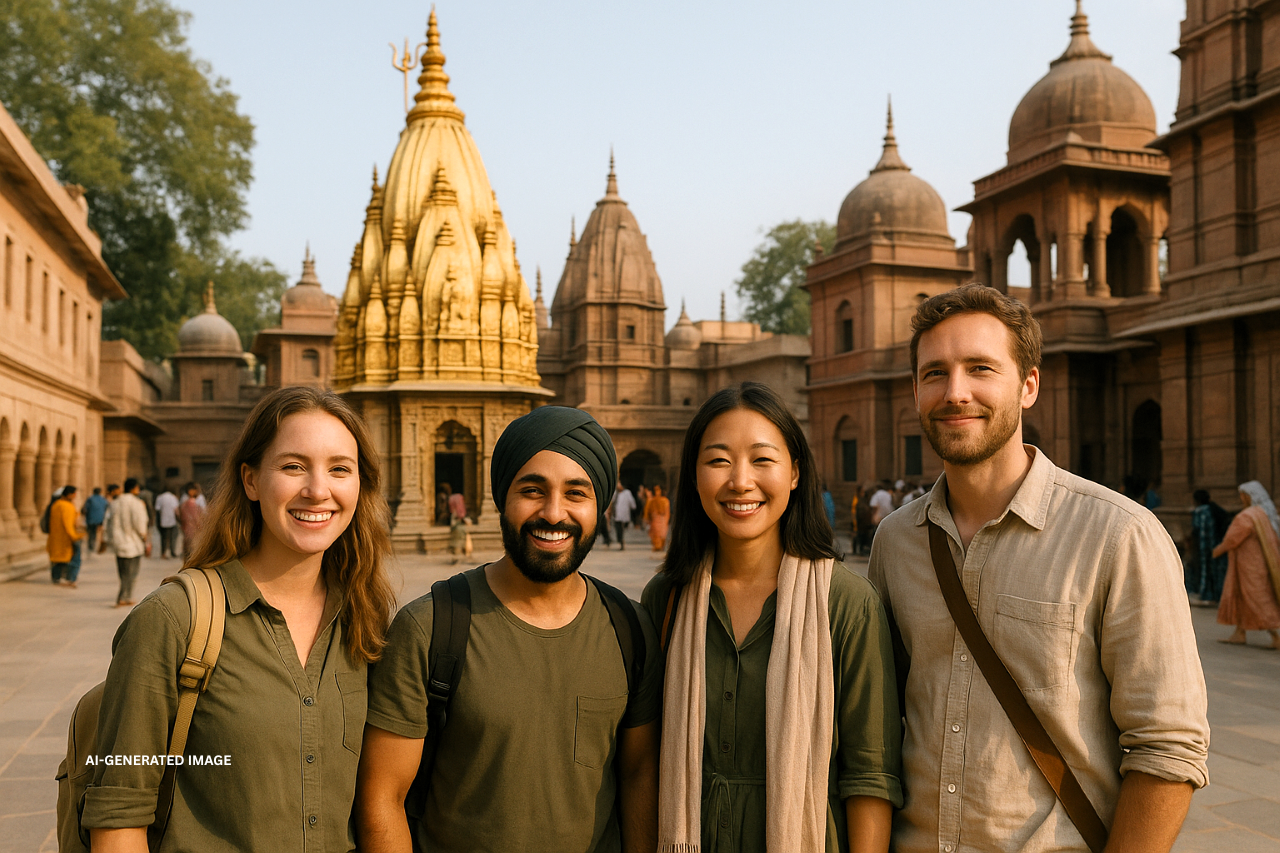
-
Sankat Mochan Hanuman Temple –
-
Known for its vibrant devotion.
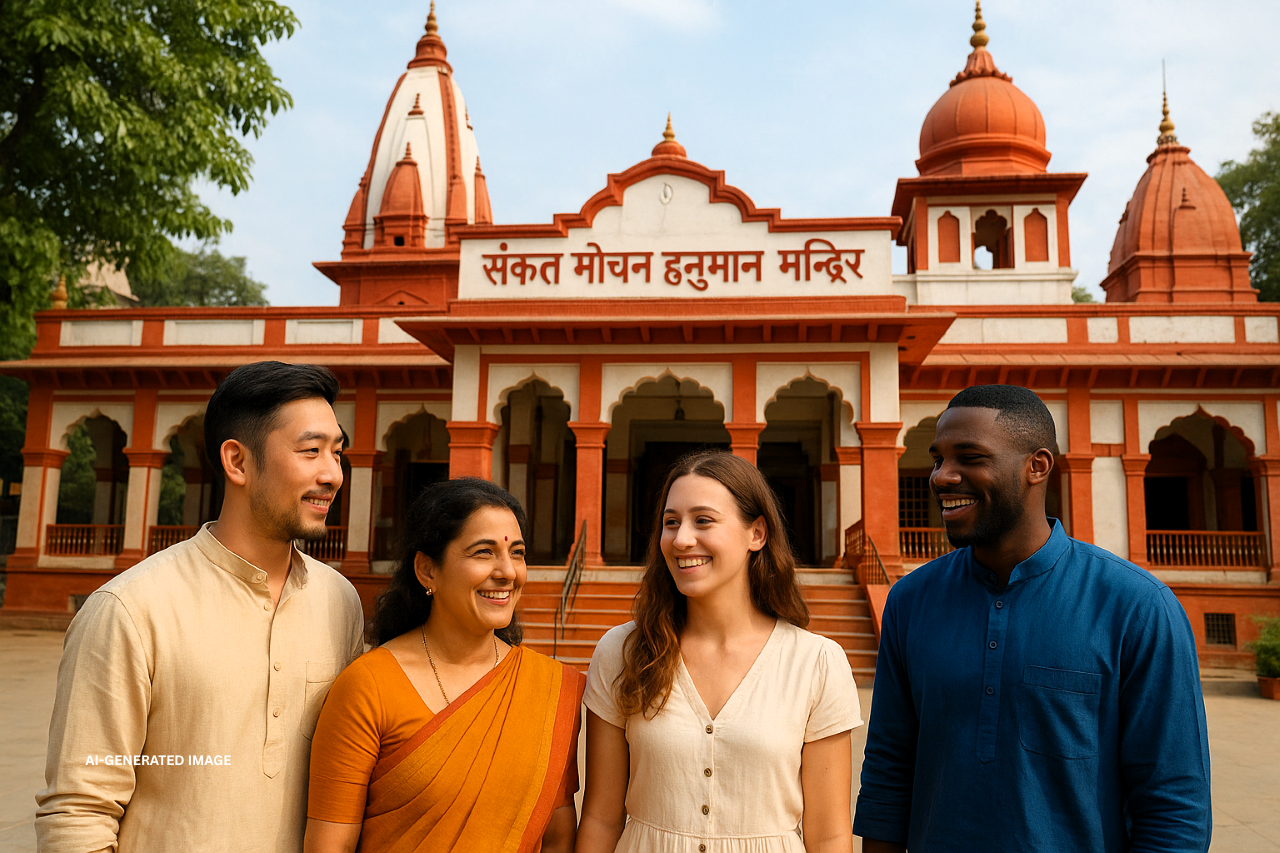
-
Durga Kund Temple –
-
A striking red temple with fascinating legends.
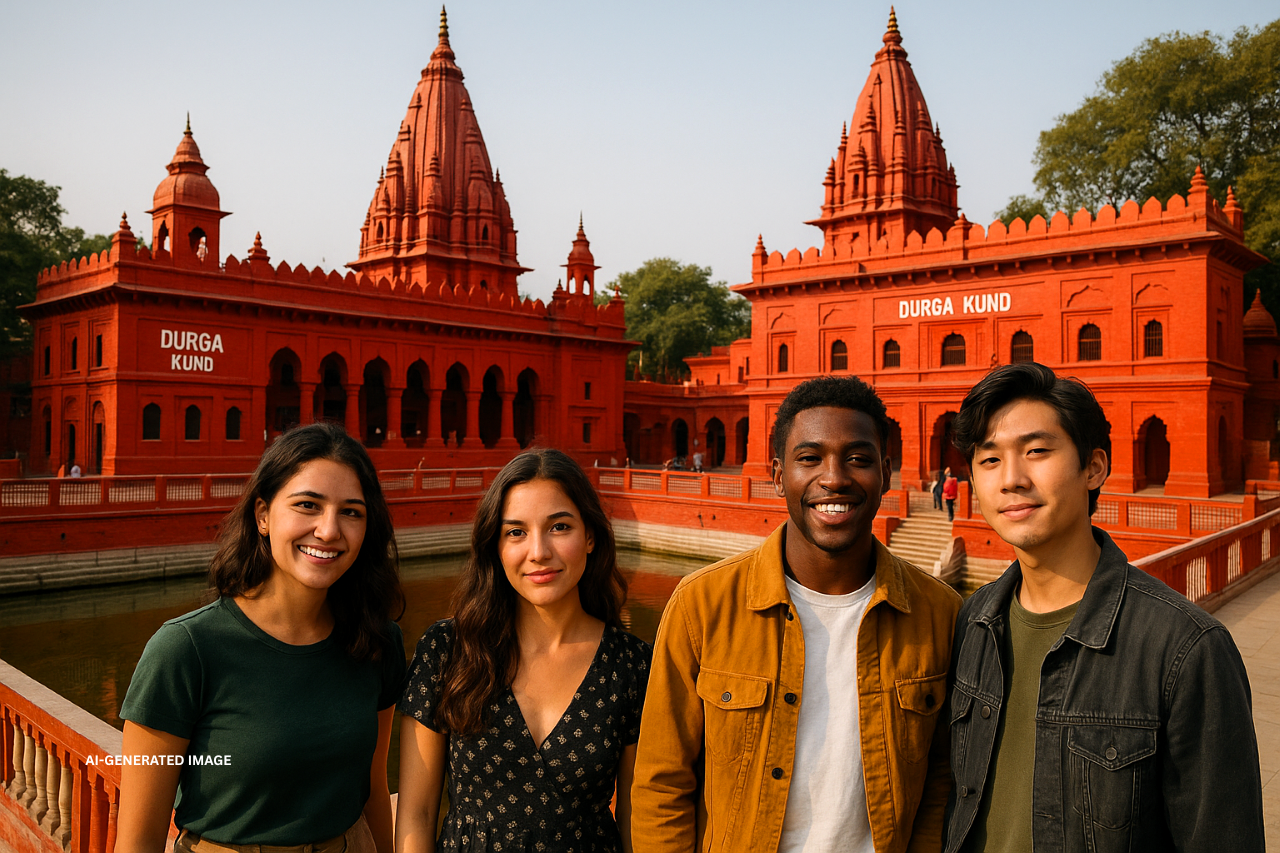
Wander the Old City Lanes
Lose yourself in a maze of narrow alleys filled with spice shops, tiny shrines, and bustling vendors. The lanes reveal the heart of Banaras’ life.
Shop for Banarasi Sarees
The artistry of Banarasi silk is unmatched. Visiting a weaving workshop allows you to appreciate the intricate craft behind these heirloom textiles.
Taste the Street Food
From crispy kachoris to the refreshing Banarasi lassi, the city’s food is rich in flavor and heritage. Don’t leave without trying the famous Banarasi paan.
Attend Cultural Shows
Music and dance performances at BHU and cultural centers showcase the city’s deep artistic traditions.
Join Yoga or Meditation Sessions
Several ghats and ashrams offer yoga classes at sunrise, combining spiritual practice with the city’s serene riverfront.
Places to See in Varanasi
Varanasi is more than just a city of rituals—it is a treasure chest of temples, forts, museums, and lively neighborhoods. Exploring these attractions gives travelers a fuller understanding of its history and living culture.
Kashi Vishwanath Temple
The most sacred landmark in the city, this temple dedicated to Lord Shiva is a centerpiece of faith for millions. Its golden spire gleams in the sunlight, and the atmosphere is filled with chants and prayers. For many pilgrims, Varanasi, India, travel feels incomplete without visiting this temple.
Bharat Mata Mandir
Unlike other temples, this unique shrine is dedicated to Mother India. Inside, a massive marble relief map of the undivided nation is worshipped as a symbol of unity and patriotism.
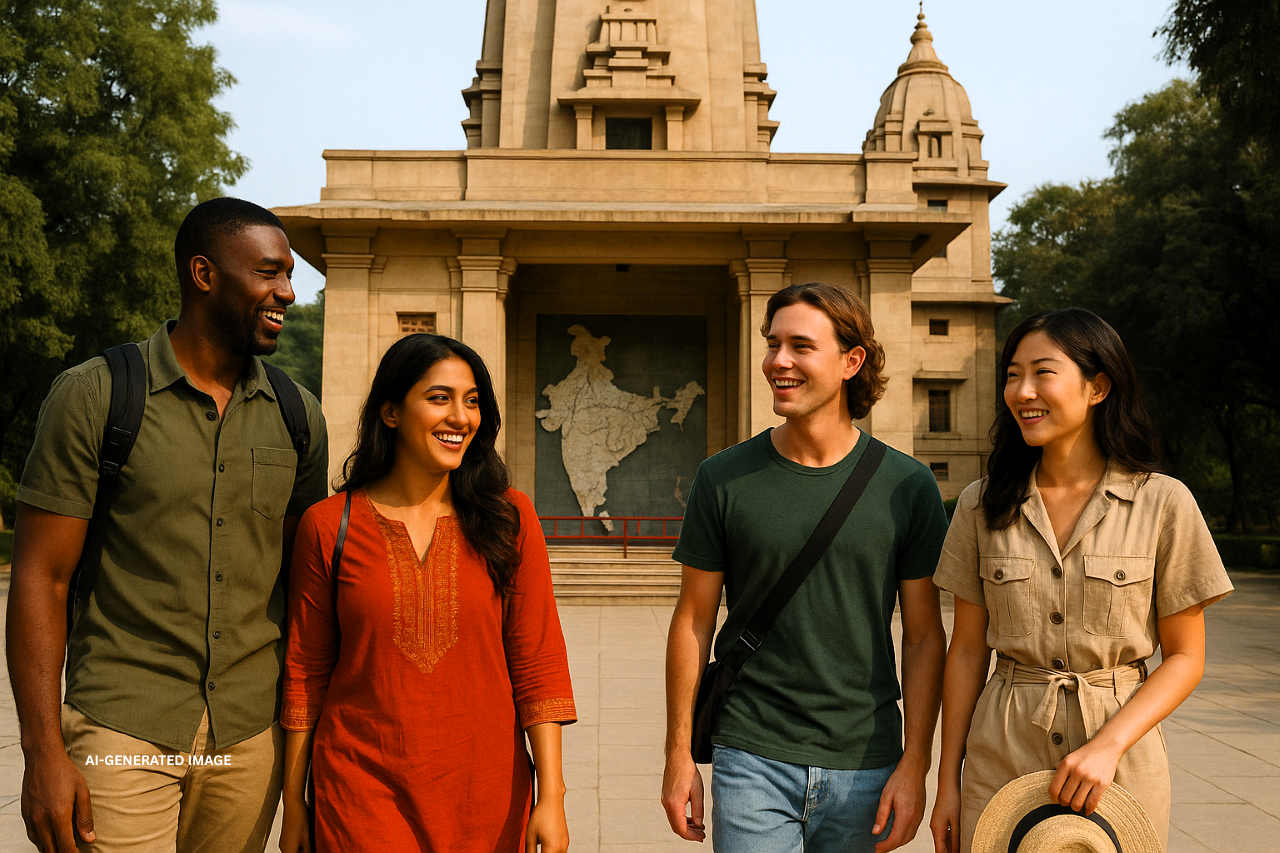
Tulsi Manas Mandir
Built on the site where saint-poet Tulsidas composed the Ramcharitmanas, this temple has walls inscribed with verses from the text. It is both spiritually and culturally significant.
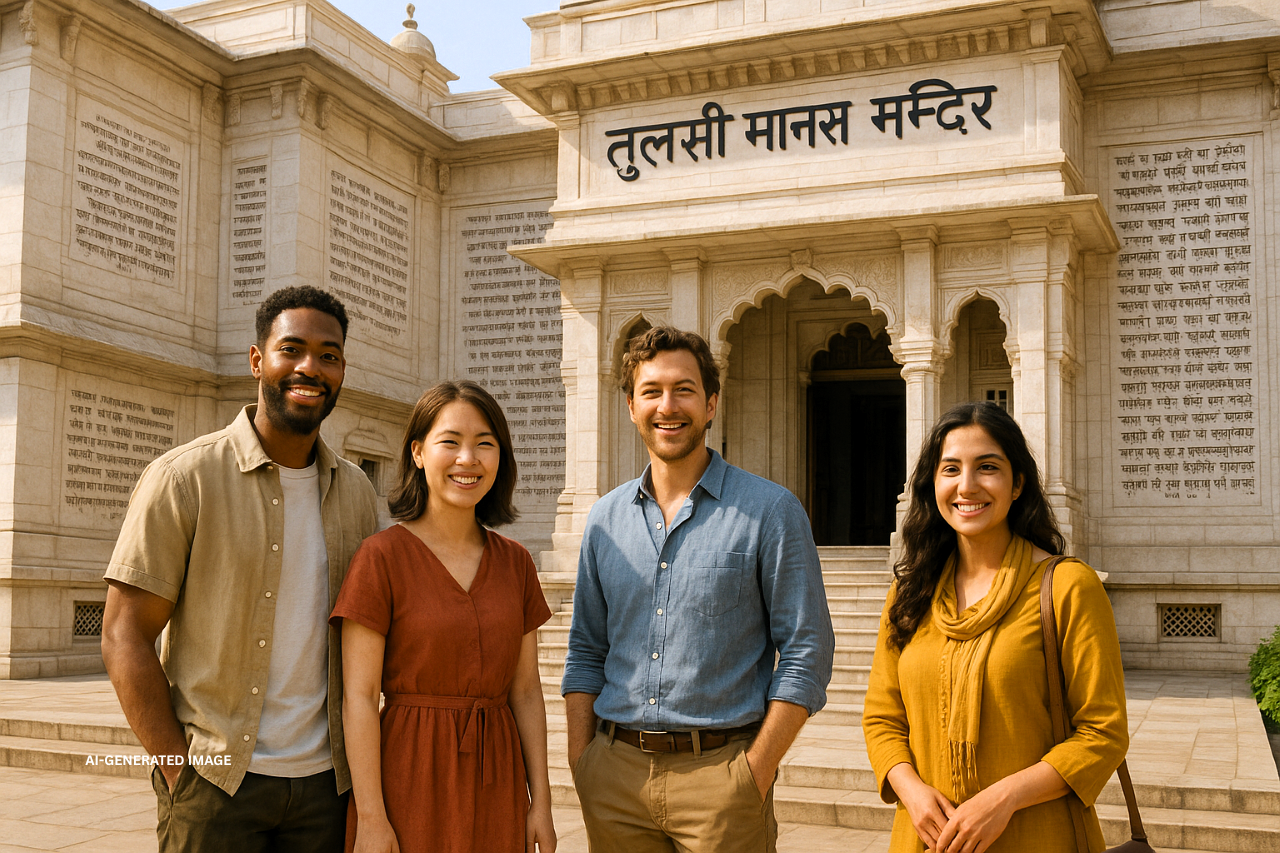
Ramnagar Fort
Standing proudly on the eastern bank of the Ganga, this 18th-century fort offers stunning river views. The on-site museum houses vintage artifacts, including royal costumes, old manuscripts, and antique weapons.
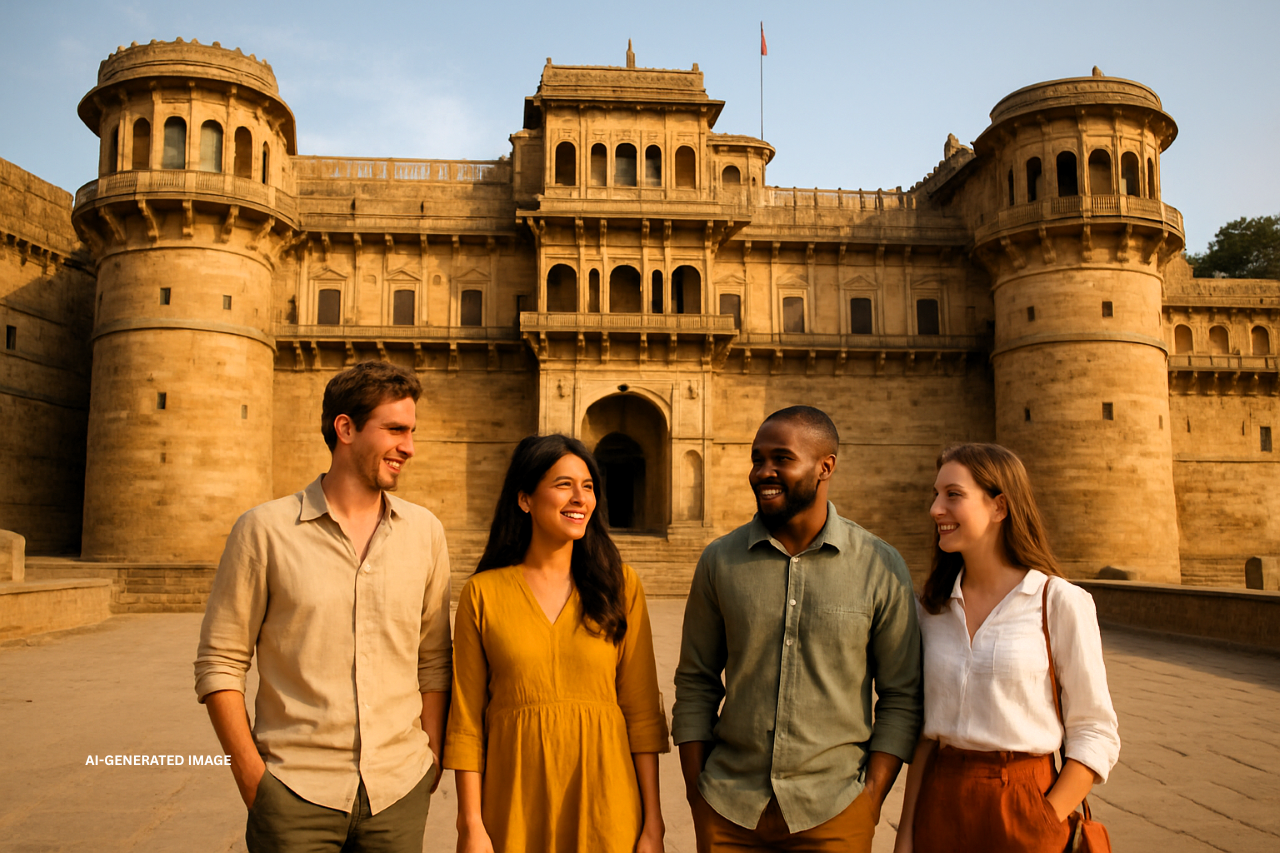
Sarnath
Located just 10 km from Varanasi, Sarnath is one of Buddhism’s most revered sites. Lord Buddha delivered his first sermon here, and the Dhamek Stupa, along with the Sarnath Museum, attracts pilgrims and history enthusiasts alike.
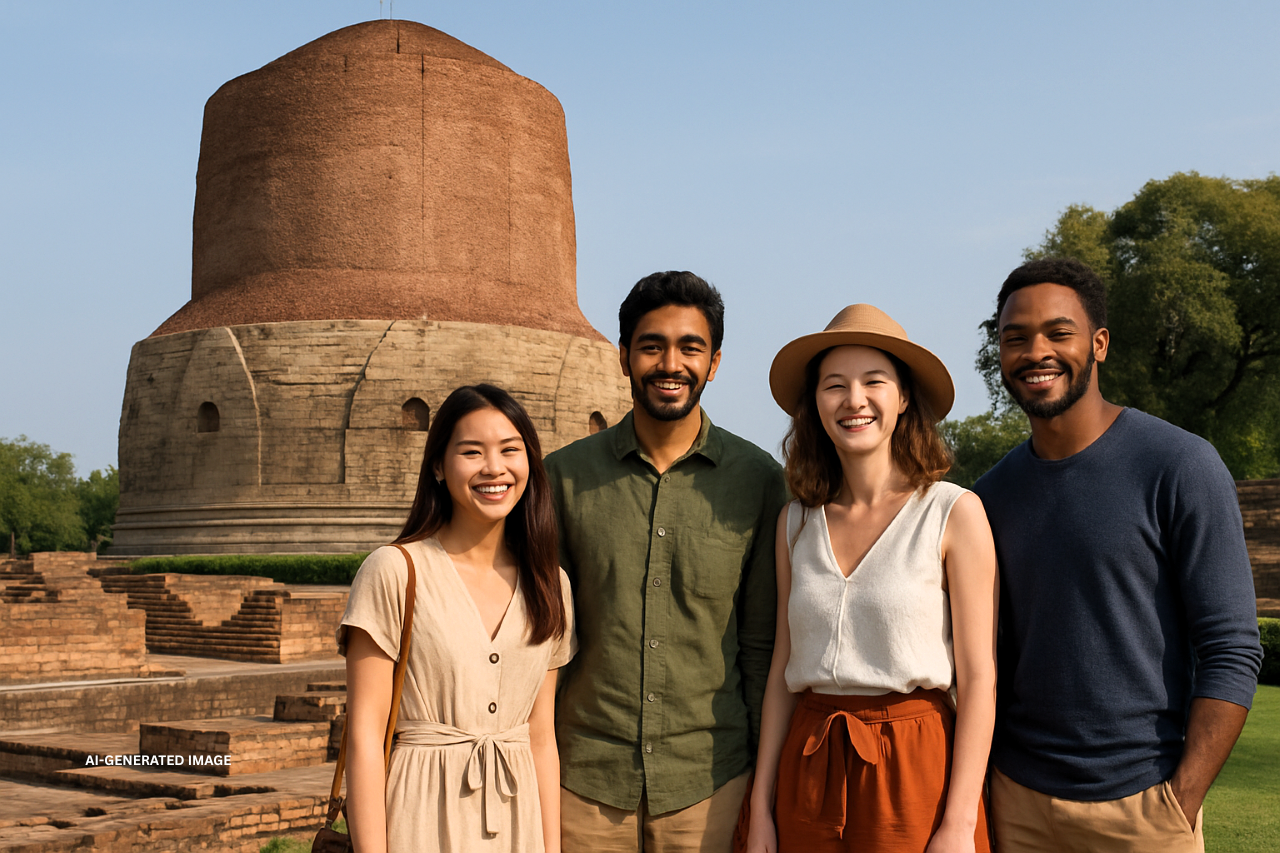
Godowlia Market
The busiest shopping area in Varanasi, this market is crowded but bursting with energy. From exquisite Banarasi sarees to brass idols, wooden toys, and spices, it is the perfect spot for souvenirs.
Varanasi Ghats – The Living Soul of the City
The ghats of Varanasi are the city’s most iconic feature. Over 80 ghats line the River Ganga, each carrying its own story and spiritual significance.
Dashashwamedh Ghat
The most vibrant and popular ghat, it is where the grand evening Ganga Aarti takes place. Priests perform synchronized rituals with fire lamps while chants and conch shells fill the air with energy.
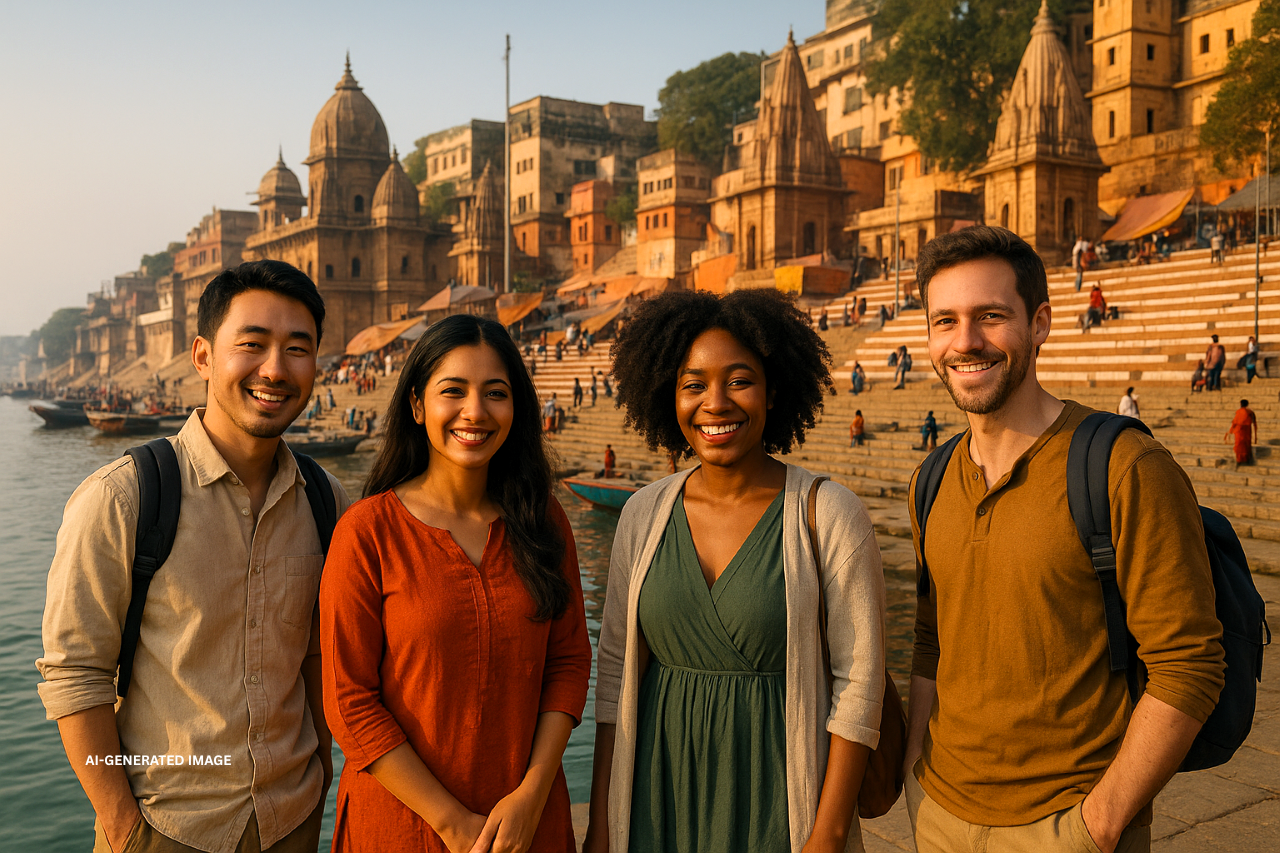
Assi Ghat
Favored by students, artists, and foreign travelers, this ghat is known for morning prayers, yoga sessions, and a relaxed vibe. Sunrise at Assi Ghat is particularly memorable.
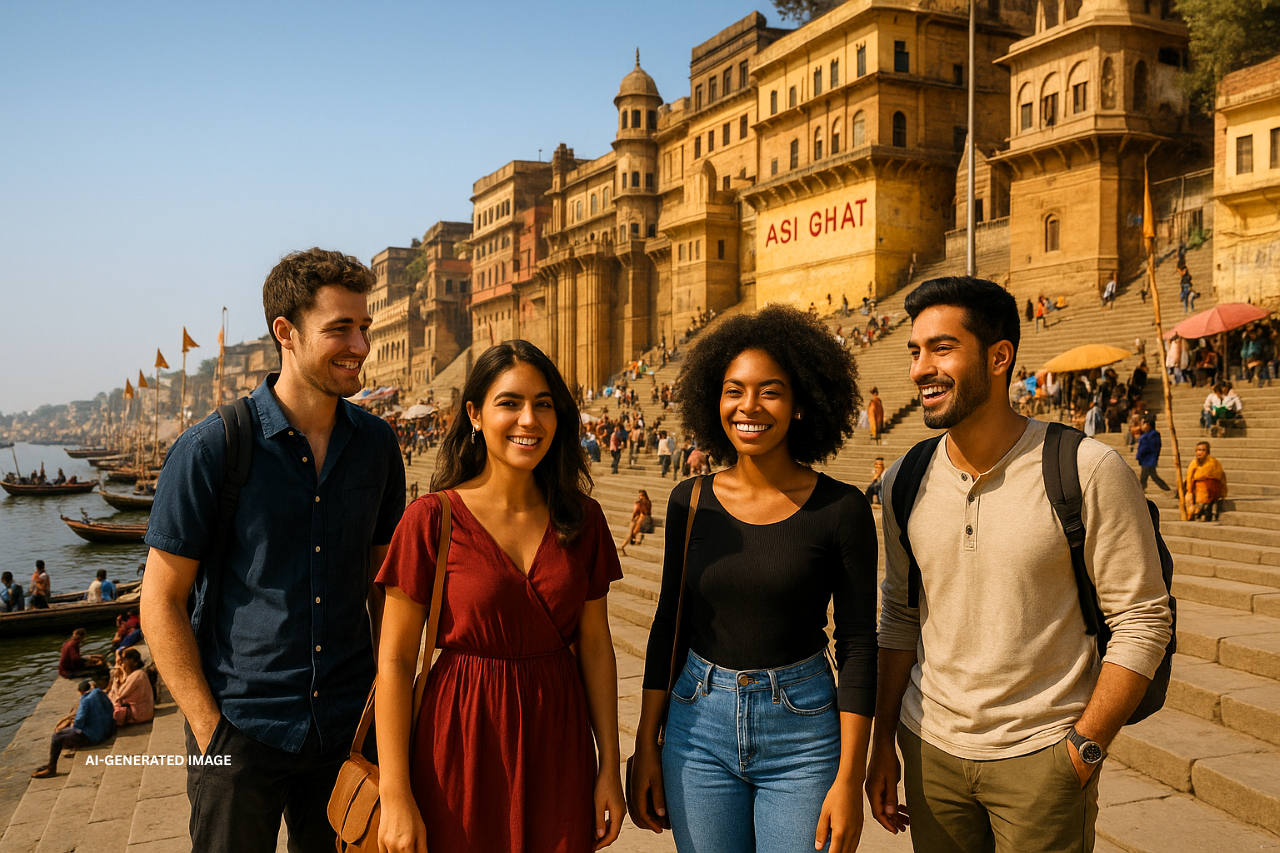
Manikarnika Ghat
Perhaps the most powerful ghat in Varanasi, this is the main cremation ground where pyres burn day and night. For Hindus, being cremated here is believed to grant moksha (liberation from rebirth).
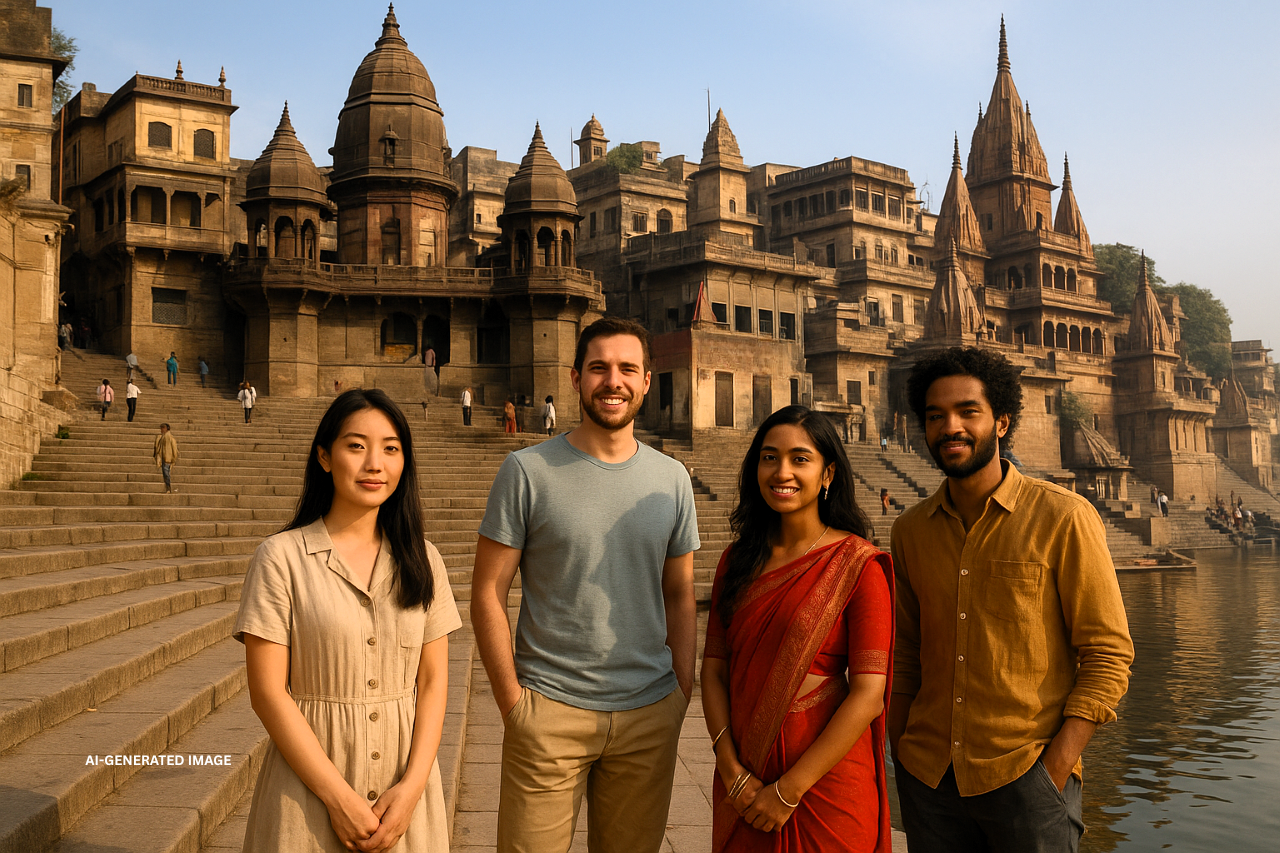
Harishchandra Ghat
Another cremation ghat, smaller than Manikarnika but equally significant. It is closely associated with the legend of King Harishchandra’s devotion to truth.
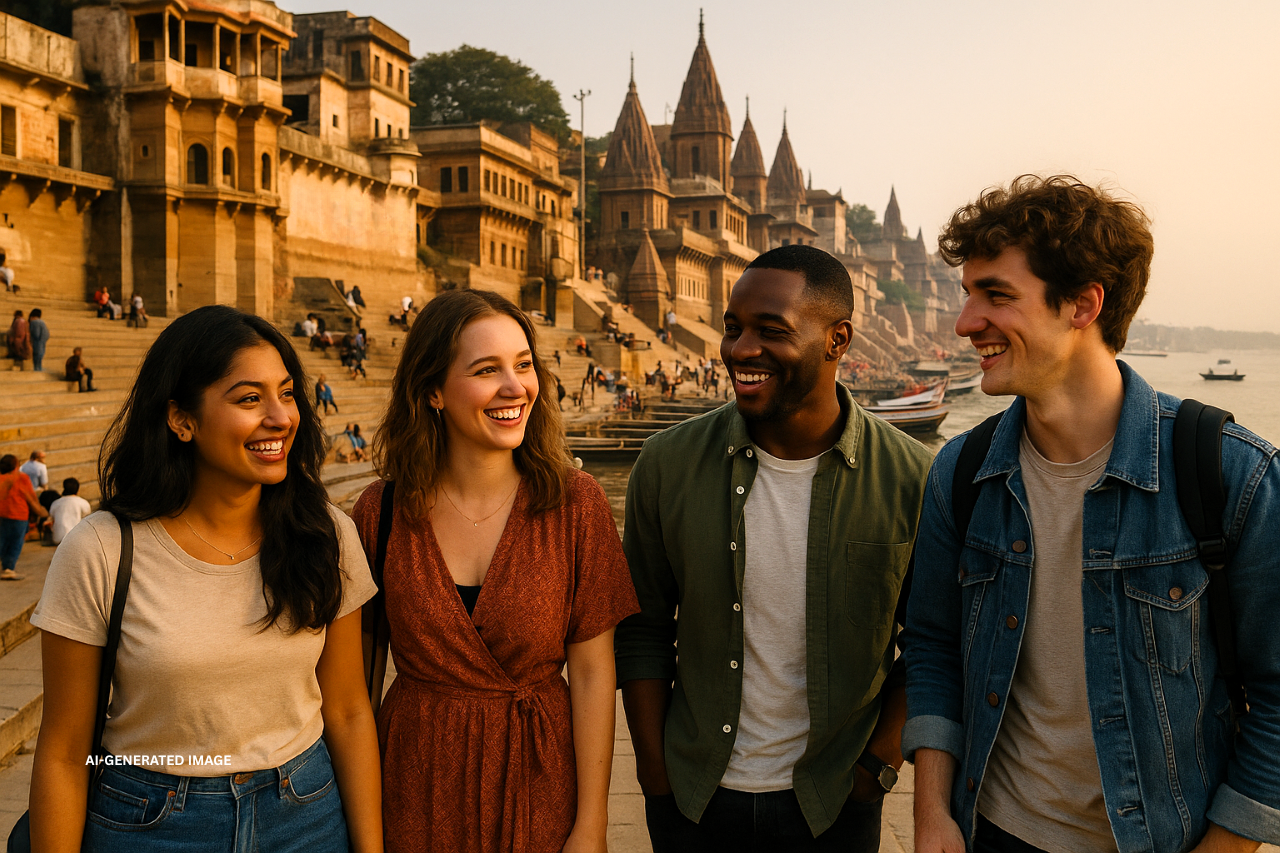
Panchganga Ghat
Considered spiritually potent, this ghat is believed to mark the confluence of five sacred rivers. Many saints are said to have meditated here.
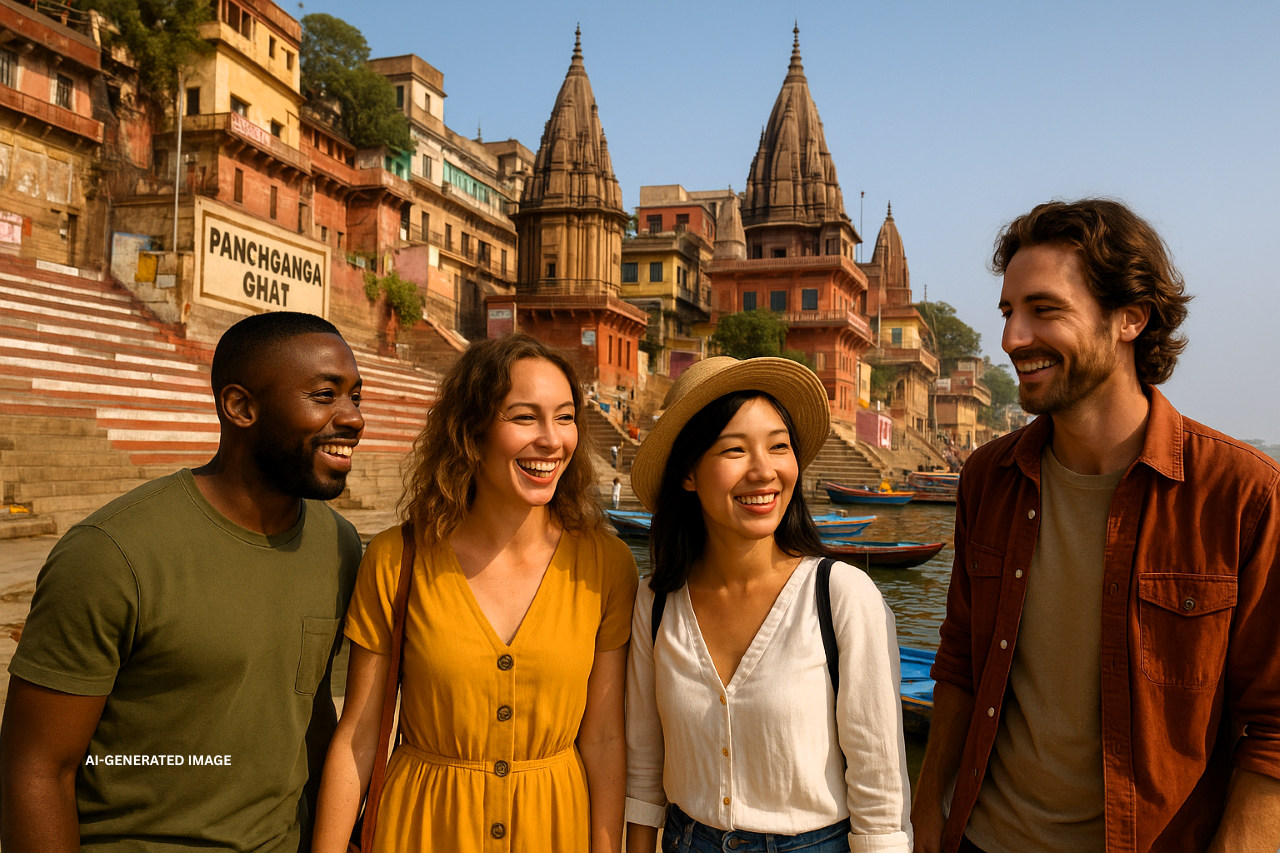
Chet Singh Ghat
Quieter and less crowded, this ghat is notable for its historic fort. Travelers seeking peaceful moments and photography opportunities often prefer it.
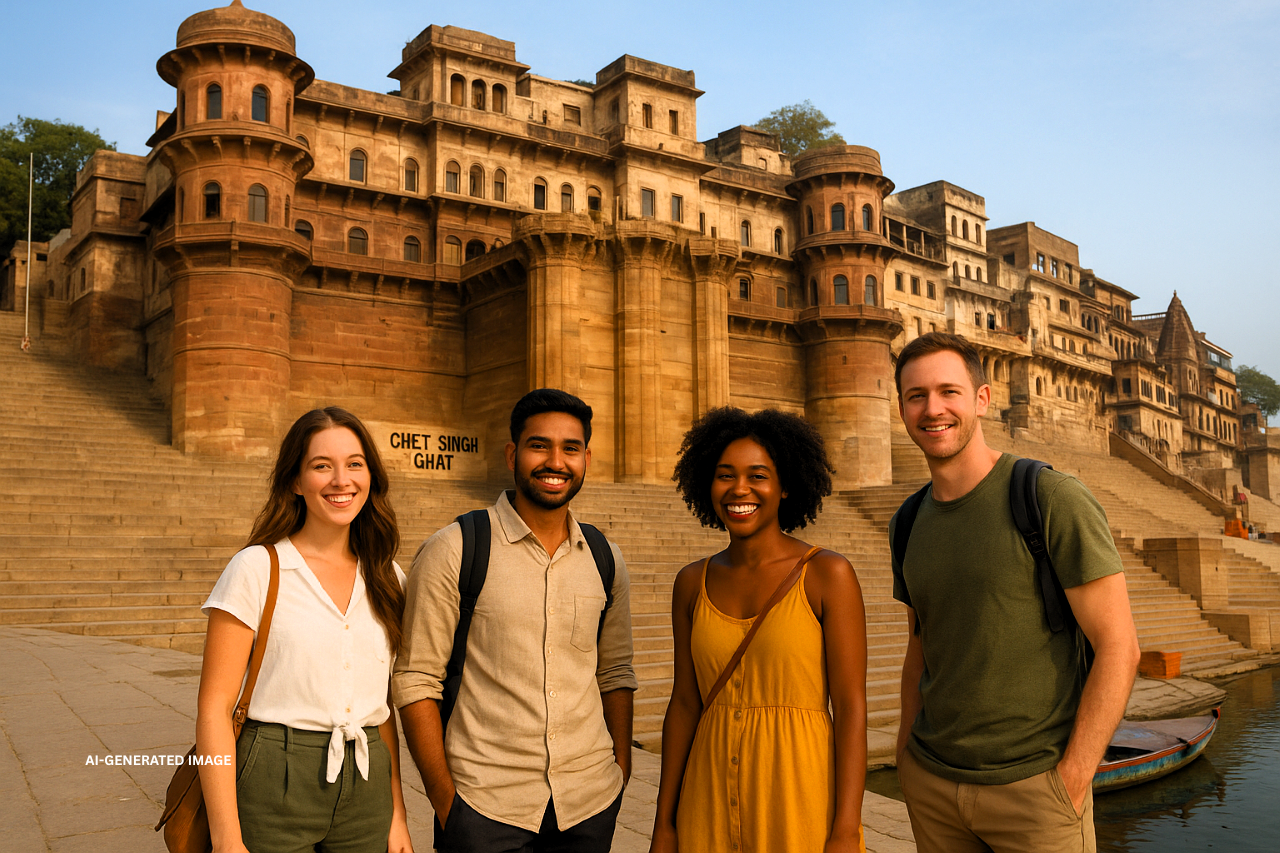
👉 Insider Tip: A sunrise or sunset boat ride is the best way to admire the ghats and experience the spiritual rhythm of Varanasi, India.
Food and Cuisine in Varanasi
One of the highlights of traveling to Varanasi is its food. The city’s culinary traditions are deeply rooted in heritage and flavor.
Street Food to Try
-
Kachori Sabzi:
-
A breakfast favorite—crispy kachoris served with spicy potato curry.
-
Tamatar Chaat:
-
A tangy and spicy street delicacy unique to Banaras.
-
Malaiyo:
-
A seasonal winter dessert made from sweetened milk froth.
Drinks and Snacks
-
Banarasi Lassi:
-
Served in clay cups, topped with a rich, creamy layer.
-
Thandai:
-
A refreshing milk-based drink with spices and nuts, especially popular during Holi.
-
Banarasi Paan:
-
An iconic betel leaf preparation that is sweet, fragrant, and symbolic of the city’s culture.
Dining Choices
-
Traditional eateries near Assi Ghat serve authentic vegetarian thalis.
-
Modern cafés overlooking the river provide a relaxed setting for international travelers.
Cultural Experiences in Varanasi
Beyond temples and rituals, Varanasi is a thriving cultural hub.
Banarasi Silk Weaving
Watching artisans weave intricate Banarasi sarees is a captivating experience. These sarees, known for their fine craftsmanship and gold threadwork, are treasured worldwide.
Music and Dance
The city has nurtured legendary artists and continues to host classical music and dance performances. Evening concerts and festivals showcase Varanasi’s rich artistic heritage.
Yoga and Meditation
Varanasi attracts seekers from across the globe. Sunrise yoga sessions on the ghats or meditation classes at ashrams provide moments of peace and reflection.
Festivals
-
Ganga Mahotsav:
-
Celebrates music, dance, and spirituality.
-
Dev Deepawali:
-
The ghats are illuminated with thousands of lamps, creating a breathtaking scene.
-
Holi:
-
The festival of colors is celebrated with unmatched energy in the lanes of Varanasi.
Where to Stay in Varanasi
Accommodation in Varanasi caters to every type of traveler, from luxury seekers to backpackers.
Luxury Stays
-
Taj Ganges:
-
A blend of modern comfort and traditional charm.
-
BrijRama Palace:
-
A 200-year-old riverside palace converted into a luxurious heritage hotel.
Mid-Range Hotels
-
Boutique-style heritage hotels offer a balance of comfort and cultural atmosphere.
-
Ideal for families and small groups looking for both convenience and value.
Budget Stays
-
Hostels and guesthouses near Assi and Dashashwamedh Ghats are popular among budget travelers.
-
Affordable stays often come with opportunities to meet fellow backpackers.
👉 Traveler’s Note: Staying close to the ghats allows you to fully experience the city’s unique atmosphere from sunrise to nightfall.
How to Reach Varanasi
Varanasi is well connected by air, rail, and road, making it accessible from most parts of India.
-
By Air:
-
Lal Bahadur Shastri Airport links Varanasi with major Indian cities and also with Kathmandu.
-
By Train:
-
Varanasi Junction and Mughal Sarai Junction are two of the busiest railway hubs in northern India.
-
By Road:
-
Highways connect Varanasi with cities like Lucknow, Allahabad, and Patna.
-
By River (Seasonal):
-
River cruise tours on the Ganga offer a unique way to arrive in the city.
Travel Tips for First-Time Visitors
-
Respect Sacred Spaces:
-
Photography is discouraged at cremation ghats.
-
Stay Healthy:
-
Drink bottled water and eat only at clean stalls.
-
Move Smart:
-
Narrow lanes are best navigated by walking, cycle-rickshaws, or tuk-tuks.
-
Bargain Politely:
-
Haggling in markets is common, but do so respectfully.
-
Plan for Festivals:
-
Accommodation fills up quickly during major festivals, so book in advance.
Suggested Day-Wise Itinerary
Day 1
-
Arrive in Varanasi, settle in.
-
Attend the evening Ganga Aarti at Dashashwamedh Ghat.
Day 2
-
Sunrise boat ride on the Ganga.
-
Visit Kashi Vishwanath Temple and explore the old city lanes.
-
Sample street food and shop for silk sarees.
Day 3
-
Half-day trip to Sarnath.
-
Visit Ramnagar Fort.
-
Evening shopping in Godowlia Market.
Day 4
-
Attend a cultural performance at BHU.
-
Relax at Assi Ghat before departure.
Conclusion
A visit to Varanasi is not just a trip—it is a journey into the very heart of India’s cultural and spiritual identity. Standing on the ghats as the Ganga flows by, you can feel the weight of centuries of devotion and tradition. The ringing of temple bells, the fragrance of incense, and the chants rising in the evening air create an atmosphere that is both powerful and humbling.
The charm of Varanasi, India travel lies in its contrasts. The city is noisy yet serene, chaotic yet peaceful, ancient yet alive. Here, spirituality blends seamlessly with everyday life. Locals pray at sunrise, traders fill the markets with silk and handicrafts, and pilgrims seek liberation on the cremation ghats—all happening side by side.
For travelers, Varanasi is not about racing through a checklist of attractions. It is about slowing down, absorbing the rhythm of the city, and allowing the experience to unfold naturally. Whether you are gliding on a boat during sunrise, savoring the flavors of Banarasi cuisine, or listening to the soulful strains of classical music, every moment here feels eternal.
If you are seeking authenticity, depth, and meaning in your travels, Varanasi will leave an imprint on your heart long after you have departed.
FAQs
Is Varanasi safe for tourists?
Yes, Varanasi is generally safe for both domestic and international visitors. Like any busy city, it is wise to stay cautious in crowded areas, keep valuables secure, and respect local customs—especially at cremation ghats.
What is Varanasi most famous for?
Varanasi is best known for its ghats along the River Ganga, the sacred Kashi Vishwanath Temple, the spectacular Ganga Aarti, and its Banarasi silk sarees. Its spiritual energy and cultural richness make it unique.
How many days are ideal for a trip to Varanasi?
A stay of three to four days is perfect to explore the city. This gives you enough time for boat rides, temple visits, cultural experiences, and a short excursion to Sarnath.
Which ghat is the most significant in Varanasi?
-
Dashashwamedh Ghat is most famous for the evening Aarti.
-
Assi Ghat is popular among travelers for yoga sessions and its relaxed vibe.
-
Manikarnika Ghat is the main cremation site, deeply revered for its spiritual importance.
What should travelers wear in Varanasi?
Comfortable and modest clothing is recommended. Light cotton clothes are best for summer, while warmer layers are needed in winter. Since much of the city is explored on foot, wearing sturdy and comfortable shoes is essential.
Can foreigners participate in rituals in Varanasi?
Foreigners are welcome to attend rituals such as the Ganga Aarti and various temple ceremonies. However, cremation rites are sacred and should only be observed respectfully from a distance.
What is the best way to explore the ghats?
The most magical way is by taking a boat ride at sunrise or sunset. From the water, you can watch rituals, observe daily life, and take in the city’s spiritual rhythm from a unique perspective.
Final Words
Varanasi, India, travel is more than just sightseeing—it is an immersion into India’s living soul. It is a place where the sacred and the everyday flow together, just like the Ganga that sustains the city. From its ancient temples and cultural festivals to its food, music, and timeless traditions, Varanasi is a destination that lingers in memory long after you leave.
